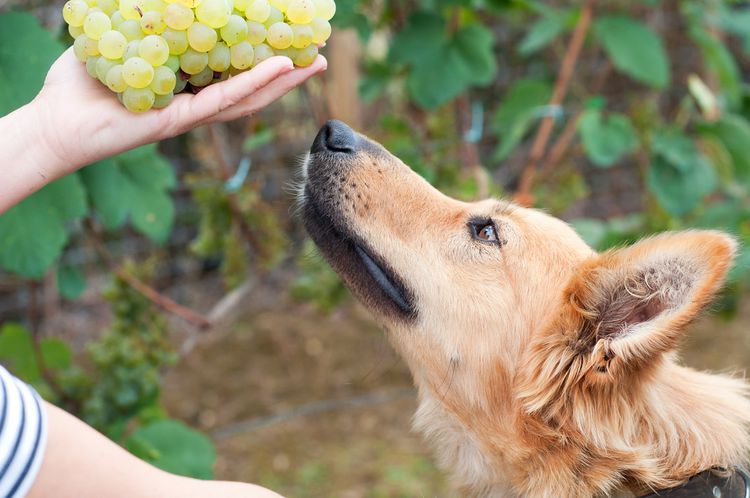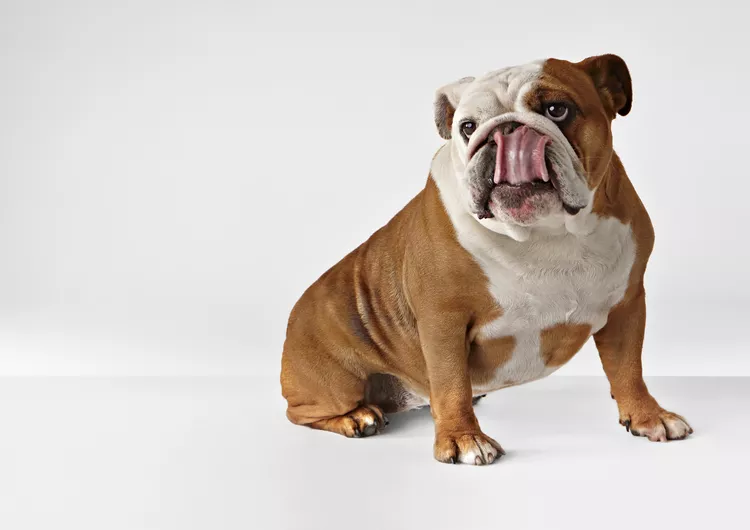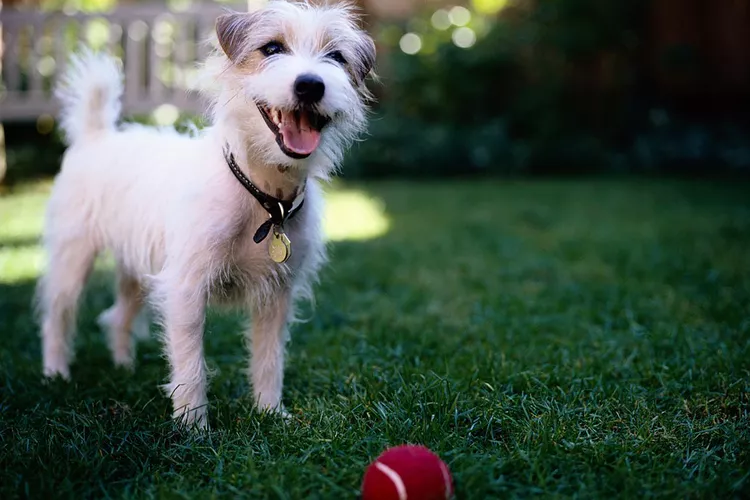
The Tibetan mastiff is a rare, large dog breed from Tibet with a massive, towering frame, flowing mane, and watchful expression. The breed is said to be as magnificent and alert as a lion. Used in Tibet and the Himalayas for thousands of years as powerful and imposing estate guardians, today’s Tibetan mastiff retains those protective instincts, watching over their home and family with endless tenacity.
Learn more about the watchful and powerful Tibetan mastiff and if they are the right dog to add to your home.
GROUP: Working
HEIGHT: Minimum 24 to 26 inches tall at the shoulder
WEIGHT: 70 to 150 pounds
COAT: Double outer coat is fine but hard, straight, and stand-off; undercoat is heavy, soft, and woolly
COAT COLOR: Black, brown/chocolate/liver, blue, gray, or gold/yellow
LIFE SPAN: 10 to 12 years
TEMPERAMENT: Intelligent, protective, strong-willed, tenacious, aloof
HYPOALLERGENIC: No
ORIGIN: Tibet
The Tibetan mastiff breed provides unparalleled loyalty, devotion, and protection to their family. As guardian dogs, they are wary of strangers and territorial of their families and their homes, according to the American Kennel Club (AKC). Because of their background as guardian dogs, they don't like to take direction from their families and can be difficult to train.
The breed’s guarding instincts are heightened at night, which can cause them to bark loudly and excessively in the evening hours. It’s best to keep your mastiff indoors at night to avoid bothering your neighbors. Make sure you have a secure fence to keep your dog from roaming day or night.
Due to the isolation of Tibet and a lack of written breeding records, the Tibetan mastiff’s history is shrouded in mystery, according to the AKC. We do know that the Tibetan mastiff is an ancient breed that has existed in Central Asia for thousands of years, and they are thought to be the origin of the different mastiff breeds.
The American Tibetan Mastiff Association says the Tibetan mastiff breed was first introduced outside of the Tibet region in 1847 when Queen Victoria received one as a gift. More than 100 years later, the breed finally made their way to the United States in the 1950s. The American Tibetan Mastiff Association, which is the national club for the breed in the U.S., was formed in 1974, and the breed received full recognition from the American Kennel Club in 2006.
The Tibetan mastiff requires special care and handling. Early socialization is mandatory with the Tibetan mastiff—an improperly socialized Tibetan mastiff has the potential to grow into a liability. Introduce your Tibetan mastiff puppy to as many people, places, animals, and things as possible, keeping interactions positive, and going at the dog’s pace.
Even with careful socialization, some Tibetan mastiffs find it difficult to accept strangers or strange animals, especially those entering the dog's property. Many Tibetan mastiffs, especially those that receive adequate socialization, are far more relaxed and accepting of strangers when off their own property.
As with all large and giant breeds, exercise for puppies and young adults must be approached with caution. Due to the Tibetan mastiff’s large frame and hefty weight, and predisposition to hereditary joint conditions like hip dysplasia, repetitive exercises like jogging or jumping should be limited and/or avoided completely until the dog is at least two years old and fully mature. Even a fully mature Tibetan mastiff is not going to be a jogging partner or agility champion, although most enjoy daily leisurely walks totaling between 30 to 60 minutes.
Even with all that fluff, Tibetan mastiffs are surprisingly easy to groom. Their coat sheds very little outside of one seasonal shed (typically in spring or summer) where they blow their coat, losing almost all of their undercoat in just a few weeks. During this heavy shed, frequent brushing and a bath or two can help but expect hair everywhere. The rest of the year, the coat sheds very little and requires just weekly brushing and bathing if they get dirty.
In addition to coat care and bathing, your dog needs regular tooth brushing and nail trimming.
Although Tibetan mastiffs are extremely intelligent and capable of quickly learning basic obedience skills, they can also be stubborn and not particularly inclined to always do what you ask. Training should be started at an early age and rules should be enforced consistently throughout the dog’s lifetime. Because the Tibetan mastiff is physically large and naturally suspicious of strangers, it is vital that any Tibetan mastiff owner be capable of physically restraining their dog when necessary, whether in public or at home.
Even with intensive socialization (which is an absolute must with this breed), the Tibetan mastiff can be difficult to train. Massive and powerful, the breed’s protective instincts are so heightened that some Tibetan mastiffs may not always listen when their owners say a visitor is allowed and not an intruder to be vanquished. Because of this, Tibetan mastiffs should only be owned by experienced dog owners.
The Tibetan mastiff, like many purebred dogs, is prone to certain genetic conditions. Responsible breeders test their adult dogs prior to breeding them to avoid passing on inherited diseases. The American Tibetan Mastiff Association requires (or recommends depending on the condition) all member breeders to perform certain health tests on all dogs prior to breeding them, as listed below.
Feeding your Tibetan mastiff may prove tricky. Despite their enormous size, many Tibetan mastiffs don’t have huge appetites, and eat far less than you might assume. Some Tibetan mastiffs even go on food strikes, refusing to eat for days at a time. For these reasons, it’s especially important to feed your pup high-quality dog food (consult with your breeder or veterinarian for a recommendation).
Pay attention to how much your Tibetan mastiff is eating so you know how much your dog is consuming and whether they're on a food strike. If your Tibetan mastiff happens to have a healthy appetite, avoid overfeeding. Free feeding can lead to weight gain, which puts stress on the joints and can contribute to health issues. Feeding measured meals allows you to track how much your Tibetan mastiff is eating, whether it’s too much, too little, or just right.
The Tibetan mastiff is one that requires an experienced dog owner. Anyone considering a Tibetan mastiff should reach out to a reputable breeder to talk about what’s it’s like to live with the breed. Some adult Tibetan mastiffs might find themselves in rescue on occasion. More often though, anyone searching for a Tibetan mastiff will need to track down a reputable breeder and get on a waitlist (often a long waitlist) for a puppy. Expect to pay between $1,500 to $5,000 for a purebred Tibetan mastiff.
Here are a few helpful resources to start your search:
Although Tibetan mastiffs are incredibly loyal and protective family dogs, they are only a fit for certain families. Before bringing one of these working dogs home, review the pros and cons of Tibetan mastiffs:
The Tibetan mastiff breed is rare and a challenge to train. But if you appreciate this dog, you might also like these breeds:
Otherwise, there’s a whole world of potential dog breeds out there—with a little research, you can find the right one to bring home.
The Tibetan mastiff is not well-suited for first-time dog owners or those who are new to guardian breeds. This breed is difficult to train and socialize, which requires someone who knows how to provide the right training and socialization opportunities to set these dogs up for success.
Tibetan mastiffs are devoted to their owners, and usually get along well with children who are part of the family, although (as with all dogs) the kids must be taught to respect the dog. The breed is not always good with children they don't know, especially those that run around and scream, or attempt to bother the dog. All interactions between Tibetan mastiffs and children must always be supervised by a responsible adult.
Male Tibetan mastiffs may go on food "strikes" during mating season. When females are in season, males will often refuse to eat for a week or more and can lose a percentage of their body weight. However, both males and females only eat when they are hungry, so it is not uncommon for a Tibetan mastiff to skip a meal altogether even when it's not mating season.
The Tibetan mastiff is legal in most places in the United States, but some specific cities have banned the dog. Bans on dogs frequently change, so before taking home or traveling with a dog, find out if there is any breed-specific legislation that could affect you.

212 Hairless Cat Names For Your Beautifully Bald Feline
Discover the perfect name for your hairless cat with our list of over 200 creative and unique names. From quirky to classic, find a fitting choice for your beautifully bald feline companion.
8 Things Your Cat Loves
Just like humans, cats can have a long list of things they like. Find out what cats love so you can keep your cat happy and healthy.
How to Tell If a Kitten is a Boy or a Girl
If you're wondering whether your new kitten is a boy or a girl, here are three ways to help determine the sex of your cat.
8 Tips to Help Cats Enjoy Car Travel
Cats are creatures of habit, and they hate to travel. Learn tips to prepare them for travel in the car, whether going to the vet or on vacation.
Common Causes of Mucus in Dog Poop
Seeing mucus in your dog's poop can be concerning to a dog owner. Here are common causes and treatment of mucus in a dog's stool.
Is Shrimp Bad For Dogs?
Shrimp can be a healthy, nutritional food for people but can dogs eat them, too? What are the main concerns with feeding shrimp to your dog?
Can Dogs Eat Grapes?
Are grapes safe for dogs? Grapes and raisins can cause serious toxicity in dogs. Find out what to do if your dog eats grapes.
Maine Coon Cat: Breed Profile, Characteristics & Care
The Maine Coon cat is of the largest cat breeds in the world. These amiable, gentle cats make great companions. Learn about the Maine Coon cat breed's appearance, temperament, health, and care needs.
Selkirk Rex: Cat Breed Profile, Characteristics & Care
The Selkirk Rex is a charming cat with a tousled coat and a loving, laid-back personality. Learn about the Selkirk Rex breed.
How to Stop Your Cat From Chewing Electrical Cords
Cats are known to pounce and attack inanimate objects, like electrical cords. Learn how to prevent your cat from ambushing objects that may harm it.
What Do Cats Think About?
Have you ever wondered what cats think about? A number of studies have explored cat behavior and feline cognition, but there's still more to learn.
Training Your Kitten to Use the Litter Box
Bringing home a new kitten means they need to learn how to properly use a litter box. Discover how to successfully litter box train your kitten.
Why Do Cats Knead?
Kneading is a common behavior in cats of all ages. Learn why cats "make biscuits" and what it means for you, your cat, and all your blankets.
Dandie Dinmont Terrier: Dog Breed Characteristics & Care
Learn about the Dandie Dinmont Terrier, a silky dog breed with a signature puff of hair atop its head and a friendly, companionable personality.
Tibetan Mastiff: Dog Breed Characteristics & Care
Learn about the Tibetan mastiff, an ancient guardian dog breed. This breed is known for their massive stature, flowing mane, and protective personality.
4 Reasons Why Your Dog Licks Their Butt
Butt-licking in dogs can be a part of normal grooming, but excessive butt-licking is not normal. Read about the most common reasons for this behavior.
How to Teach Your Dog the "Leave It" Command
Training your dog the "leave it" command is a great way to instill self-control. Learn how to teach your dog to not pick things up from the ground.
How to Solve Your Dog's Fear of Car Rides
Is your dog scared of car rides? This fear of riding in cars is common. Learn why your dog is scared of car rides and how to help conquer this fear.
Can Dogs Get Depression? How to Help Your Sad Dog
Can dogs get depression? Learn about the signs of depression in dogs and find out how to help your sad dog.
How to Play Tug of War With Your Dog
Many dogs love to play tug of war, and it's a healthy game that provides great exercise. Learn the best way to safely play tug of war with your dog.